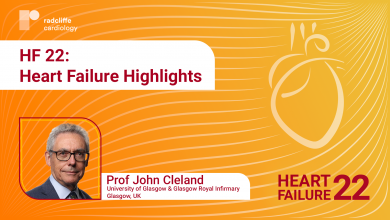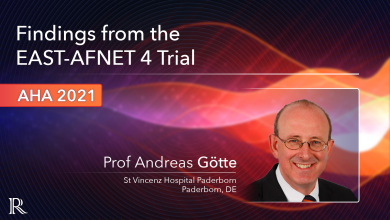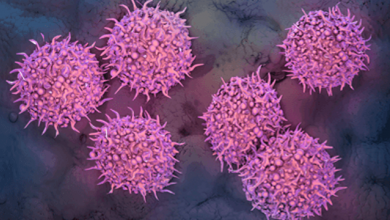Search results
Author(s):
Laurent Bonello
Added:
3 years ago
Clopidogrel is a key antiplatelet agent that inhibits the second step of platelet aggregation through blockade of the P2Y12-adenosine diphosphate (ADP) receptor.1 Its use has enabled percutaneous coronary intervention (PCI) to expand by dramatically reducing thrombotic complications in acute coronary syndromes (ACSs).2,3 Since the first report by Jaremo et al. of a large inter-individual…
View more
Author(s):
Alexandros Protonotarios
,
Perry Elliott
Added:
3 years ago
Until the 20th century, conventional medicine relied almost exclusively on observable characteristics to classify and treat human disease.1 Even in the modern era, physicians define diseases using phenotypic similarities and employ relatively simple algorithms to interpret diagnostic tools and plan treatment. The advent of low-cost genetic sequencing and its introduction into clinical care…
View more
Author(s):
Barinda Agian Jeffilano
,
Wawaimuli Arozal
,
Ulfa Tri Wahyuni
,
et al
Added:
2 years ago
Author(s):
Josep Lupón
,
Antoni Bayés-Genís
Added:
3 years ago
The left ventricular ejection fraction (LVEF) – calculated as the stroke volume (end-diastolic volume minus end-systolic volume) divided by the end-diastolic volume – remains the main driver for categorising heart failure (HF) and it is a cornerstone in all randomised clinical trials for patients with HF. Although LVEF has many acknowledged limitations, it remains key for the classification,…
View more
Michael Fu
Job title: Professor, Principal Investigator, Senior Consultant Physician/Cardiologist
Author
Author(s):
John GF Cleland
Added:
1 year ago
Prof John Cleland (University of Glasgow & Glasgow Royal Infirmary, Glasgow, UK) joined us to talk about heart failure management highlights in 2022 including a new phenotype, HFsnEF; available and new treatment options; news on SGLT2is and more.
Recorded at Heart Failure 2022, Madrid.
Videographer: Tom Green
Editor: Mirjam Boros
View more
Author(s):
Andreas Goette
Added:
2 years ago
In this short video interview, Prof Andreas Goette (St Vincenz Hospital Paderborn, Paderborn, DE) discusses the findings from the the EAST-AFNET 4 Trial. The trial investigated whether rhythm control therapy delivered within one year after AF diagnosis improves outcomes. The trial, presented at AHA 21, demonstrated that clinical benefit of early rhythm control was consistent in AF patterns.
…
View more
Author(s):
Shu Nakao
,
Dai Ihara
,
Koji Hasegawa
,
et al
Added:
3 years ago
Induced Pluripotent Stem Cells and Their Potential Applications
Induced pluripotent stem cells (iPSCs) are generated from somatic cells, such as skin fibroblasts, by ectopic expression of defined reprogramming factors. Within a few years of the first report of the generation of mouse iPSCs, several laboratories reportedly reproduced these cells using other cell types and species using similar…
View more
Professor Keith AA Fox
Author(s):
Keith AA Fox
Added:
3 years ago
Article
Author(s):
Aneil Malhotra
,
Sanjay Sharma
Added:
3 years ago
Athletes who perform regular and intensive exercise regimes develop a variety of electrical and structural cardiac adaptations that manifest functionally to improve stroke volume and performance. Up to one-fifth of young athletes (aged between 14–35 years) reveal greater left ventricular (LV) wall thickness compared to sedentary controls, though the majority fall under 12 mm.1,2 A small…
View more
















